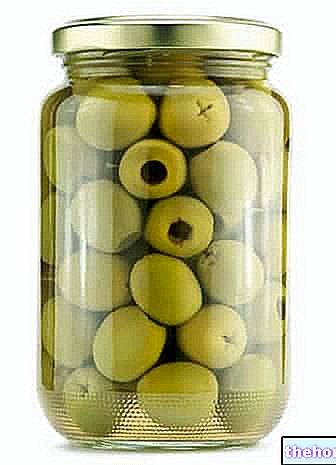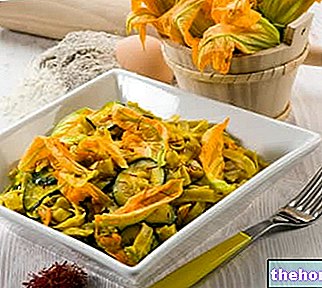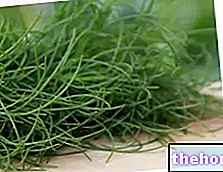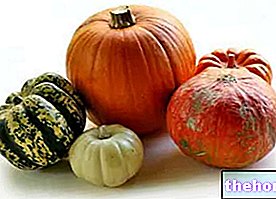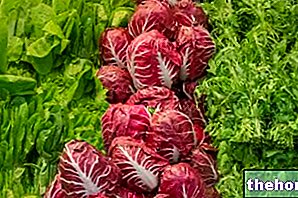The article that follows is aimed at the description of watercress, a plant with marked aromatic characteristics.
In Italy, the term cress (in addition to the famous Romagna gastronomic preparation, which has nothing to do with what will follow) indicates TWO types of herbaceous plants:
- the garden cress (in English garden cress);
- the water cress (rorippa or schino).
Both belong to the Brassicaceae family, but differ substantially in Genre, Species, Habitat, cultivation, properties and uses.
Garden cress
Generalities and description of the garden cress
The garden cress (garden cress) is a plant belonging to the Brassicaceae family, Genus Lepidium, Species sativum; its binomial nomenclature corresponds to Lepidium sativum.

Garden cress can reach 60cm in height (but is typically taken within 20cm) and has the ability to branch out at the top of the plant. The stem and leaves are bright green, while near the roots it is paler; the flowers are small, clustered and pinkish-white in color.
Garden cress cultivation and trade
Garden cress is widely cultivated (both commercially and privately) in England, France, Holland and Scandinavia; in Italy it is a product of secondary importance. It lends itself to hydroponic crops and thrives in slightly alkaline water. Often, the market supply is not sufficient to cover the needs of populations that consume it widely; this is attributable to the need to consume it above all FRESH.
Garden cress is rather easy and quick to grow independently, both with seeds and with the transplantation of small plants; in general, 7-14 days of growth after sowing are sufficient to reach 5-13cm in height.
Garden cress has an extremely rapid development, therefore it is used as a Species-Test for monitoring the health of the soil.
Garden cress in the kitchen
Garden cress is excellent in soups and sandwiches; in the form of sprouts (fresh or dried), it also represents a spicy aromatic component for salads (in Indian: halloon). The typical Anglo-Saxon sandwich with garden cress is made from hard-boiled eggs, mayonnaise and salt.
Herbal characteristics and other uses of garden cress
Garden cress is one of the components of Ayurveda medicine; according to Indian tradition, the seeds of this herb can be used for various healing purposes. Among these, we remember: bittering, thermogenic, purifying, rubefacient, galactogogic, tonic, aphrodisiac, ophthalmic, antiscorbutic, antihistamine and diuretic capacities. According to the same current of thought, the seeds of garden cress are therefore useful in the treatment of: asthma, cough with expectoration, compresses for sprains, leprosy, skin diseases, dysentery, diarrhea, splenomegaly, dyspepsia, low back pain, leucorrhea, scurvy and seminal weakness.
Garden cress has also aroused the curiosity of Western medicine; it seems that its seeds have been shown to reduce asthma symptoms, improve lung function in asthmatics and lower blood sugar (see bibliography).
The mucilage from the seeds is used as a substitute for gum arabic and tragacanth.
Bibliography:
- A study on clinical efficacy of Lepidium sativum seeds in treatment of bronchial asthma - NP, Archana; Anita, AM - Iran J Pharmacol Ther 5: 55-59
- Study of the hypoglycaemic activity of Lepidium sativum L. aqueous extract in normal and diabetic rats - M, Eddouks; Maghrani M, Zeggwagh NA, Michel JB - J Ethnopharmacol 97: 391-395.
Watercress
Generalities and description of watercress
Watercress is an aromatic herbaceous belonging to the Brassicaceae family, Genus Nasturtium, Species officinal; the binomial nomenclature of watercress is Nasturtium officinale.

Watercress is a plant that grows along calm and low-polluted watercourses, in the plains, in the mountains and in all temperate zones of the planet. The plant needs to keep the roots totally soaking or always very humid; the placement of the ground must be shady. The stems are prostrate or erect, hollow and up to 50 / 100cm long. Watercress has green, shiny, fleshy and alternate leaves. The flowers are small, with white petals, and are collected in top clusters. The fruits are cylindrical siliques containing the seeds. The roots are fasciculated and adventitious near the ground.
Watercress can be confused with Bitter cardamine, recognizable by its opaque colored leaves and by the absence of the organoleptic and gustatory characteristics typical of watercress.
History of watercress
Watercress is an aromatic medicinal plant that is both wild and cultivable. The gastronomic use of this vegetable dates back to ancient times (Persians, Greeks, Romans), when it was believed that its habitual consumption could enhance intellectual abilities. Watercress is also involved in numerous myths and legends, which is why it was widely marketed until a few years ago.
Phytotherapeutic properties of watercress
Excluding myths, legends and beliefs, watercress possesses some real phytotherapeutic characteristics and others less tangible. Among them we remember: remineralizing, diuretic and purifying, anti-anemic, expectorant, hepatic decongestant and hypoglycemic capacity; it is also recommended for lung diseases.
Watercress in the kitchen
Watercress should be consumed mainly "cooked" and carefully washed, especially in case of harvesting from waterways of dubious health. The plant is object of gastronomic elaboration to obtain: mixed cooked herbs (also sautéed), flavored egg omelettes, soups, acquacotta (Florentine) etc. Obviously, as for most aromatic plants, the heat treatment significantly affects it. only the aroma and taste, but also the chemical-nutritional properties; therefore, with a good hygienic standard, it is possible to consume raw water cress in a mixed salad (with burnet, rocket, etc.) or alone. Chopping the leaves produces sauces with a particularly intense flavor.
In Italy, however, it is a typical ingredient of Romagna "watercress".
Nutritional characteristics
The nutritional contribution of the two types of cress is quite interesting. They do not bring large quantities of energy (however greater in garden cress) and the water portion is absolutely predominant; even the fiber is quite scarce.
On the other hand, as far as mineral salts and vitamins are concerned, it can be said that garden cress contains high concentrations of potassium, iron, riboflavin, vitamin A (carotenoids - equivalent retinol) and vitamin C (ac. ascorbic). Watercress, on the other hand, in addition to being rich in the nutrients mentioned (albeit not at the levels of the previous one), has a higher calcium content.
Nutritional values

Other Foods - Vegetables Garlic Agretti Asparagus Basil Beets Borage Broccoli Capers Artichokes Carrots Catalonia Brussels sprouts Cauliflower Cabbage and Savoy cabbage Red cabbage Cucumber Chicory Turnip greens Onion Sauerkraut Watercress Edamame Chives Chanterelles Flour Cassava Flowers Pumpkin Flour Edible Flowers Pumpkin Seasonal Fruits and Vegetables Endive Salads and Salads Strengthening Salad Lettuce Aubergines Vegetables Nettle Pak-Choi Parsnip Potatoes American Potato Peppers Pinzimonio Tomatoes Leeks Parsley Radicchio Turnips Red Turnips Radishes Rocket Shallots Endive Celery Celeriac Seeds Sprouted Spinach Truffle Valianamberi or Jerusalem artichoke laxatives Saffron Pumpkin Zucchini Vegetables - Nutritional properties OTHER VEGETABLE ITEMS Categories Food Alcoholics Meat Cereals and derivatives Sweeteners Sweets Offal Fruit Dried fruit Milk and derivatives Legumes Oils and fats Fish and fishery products Cold cuts S pezie Vegetables Health recipes Appetizers Bread, Pizza and Brioche First courses Second courses Vegetables and Salads Sweets and Desserts Ice creams and sorbets Syrups, liqueurs and grappa Basic preparations ---- In the kitchen with leftovers Carnival recipes Christmas recipes Light diet recipes Women's Day, Mum, Dad Recipes Functional Recipes International Recipes Easter Recipes Recipes for Celiacs Recipes for Diabetics Recipes for Holidays Recipes for Valentine's Day Recipes for Vegetarians Protein Recipes Regional Recipes Vegan Recipes


